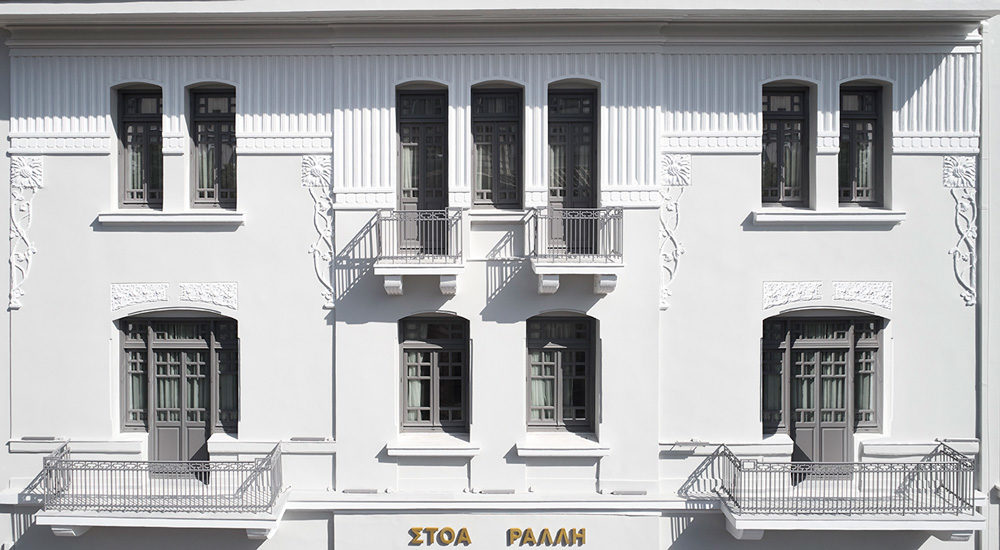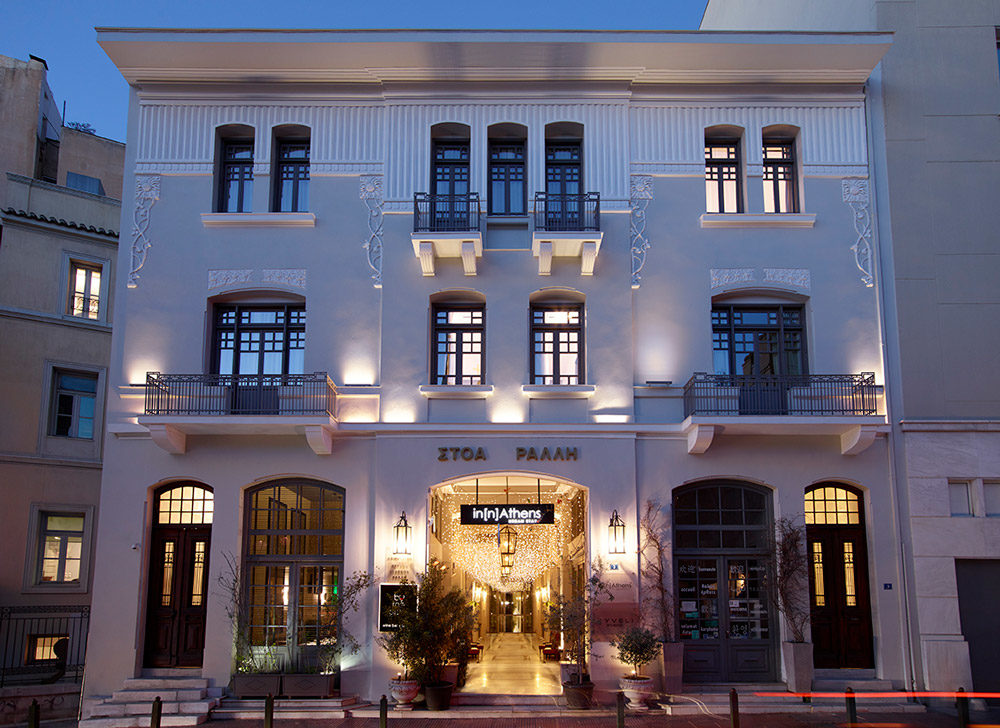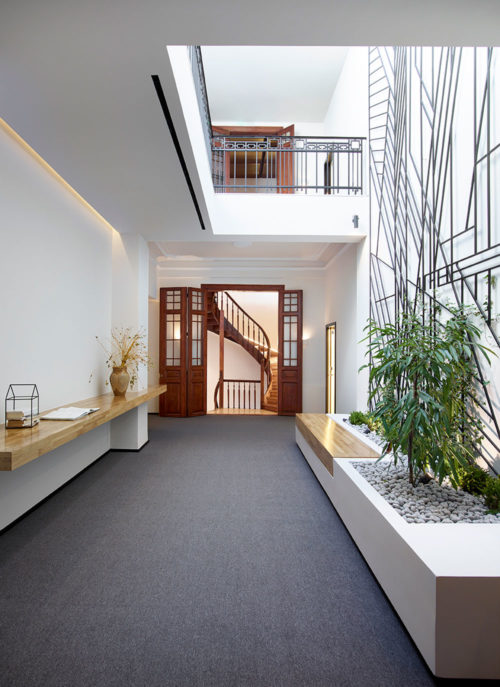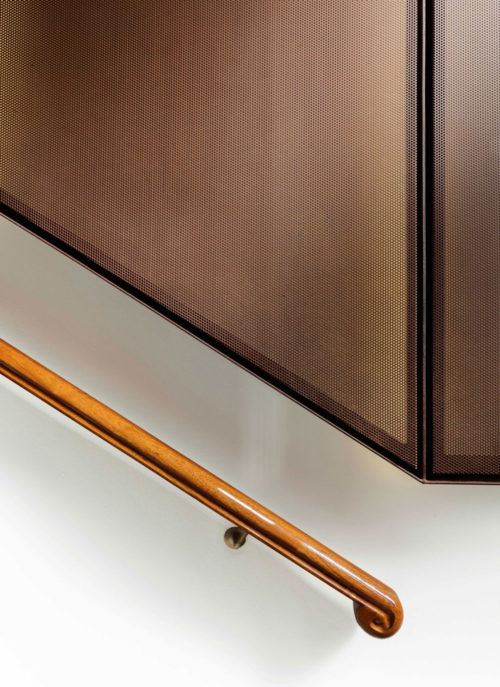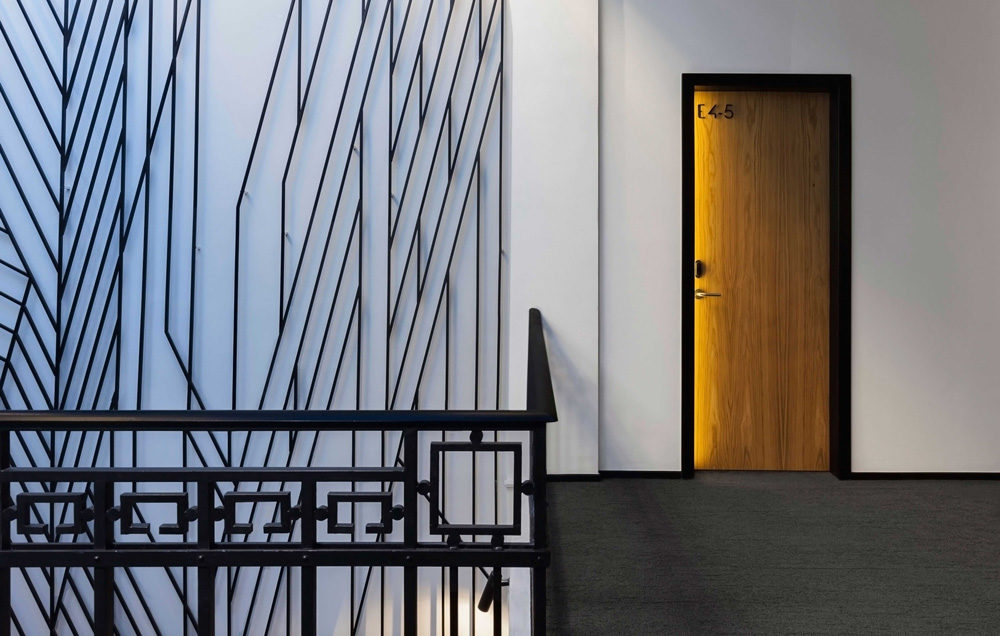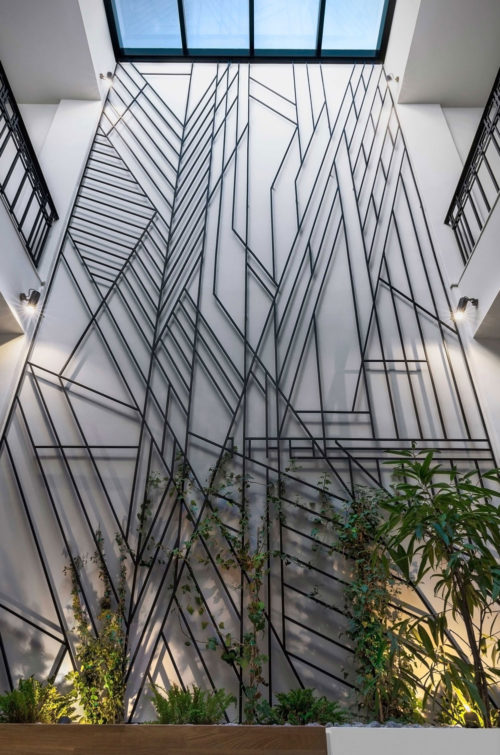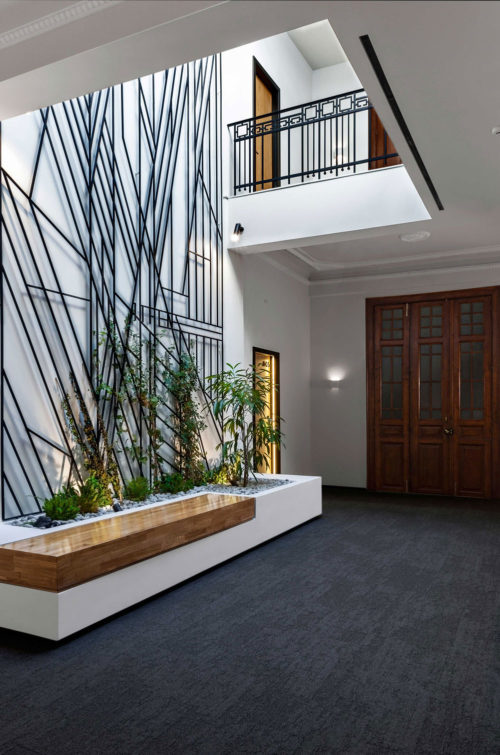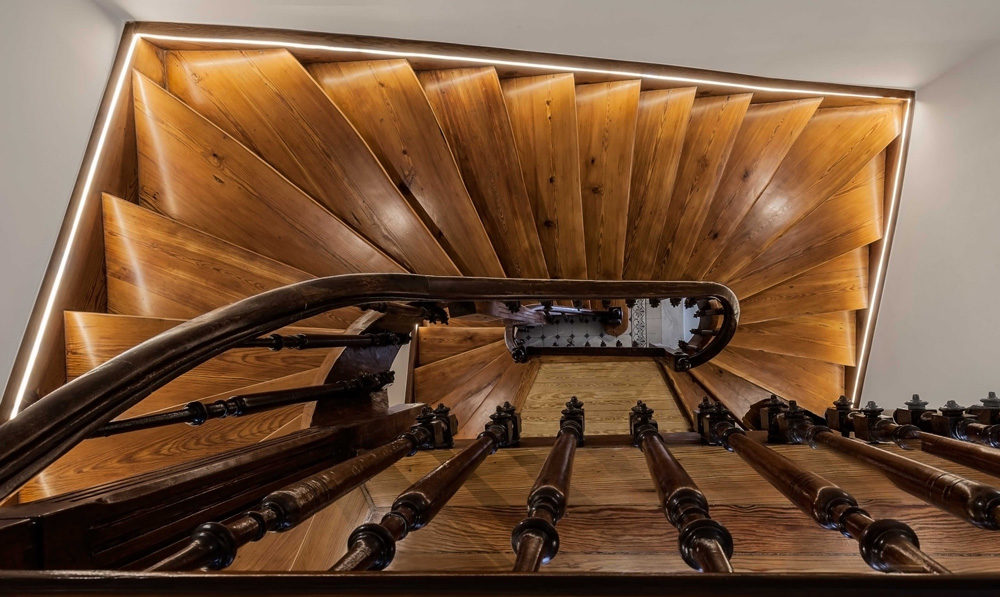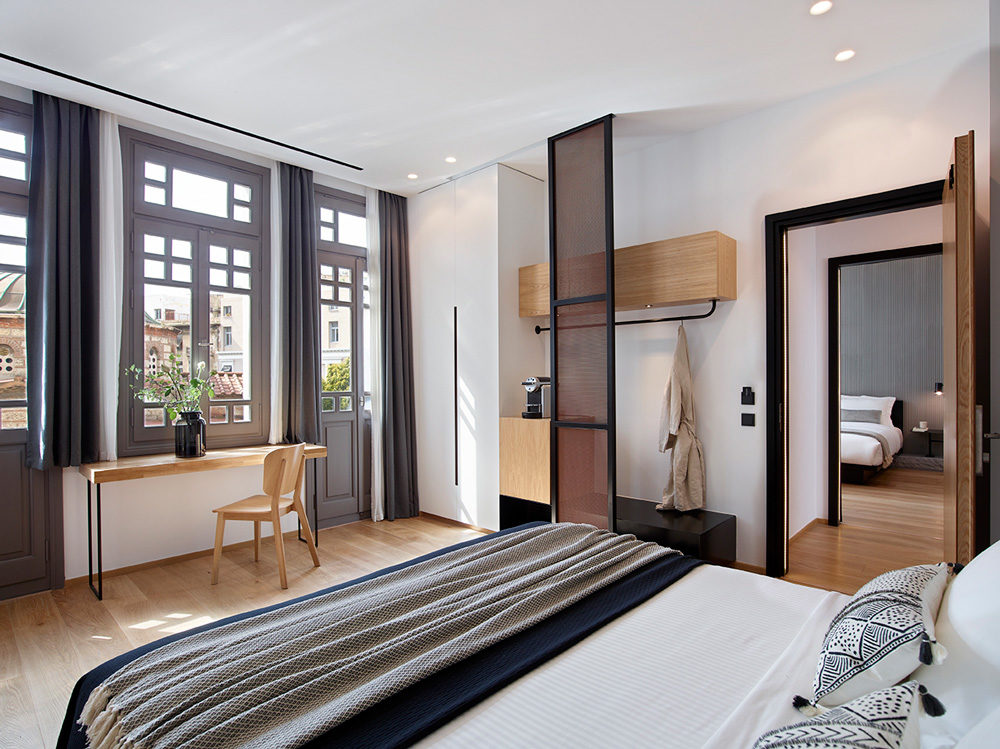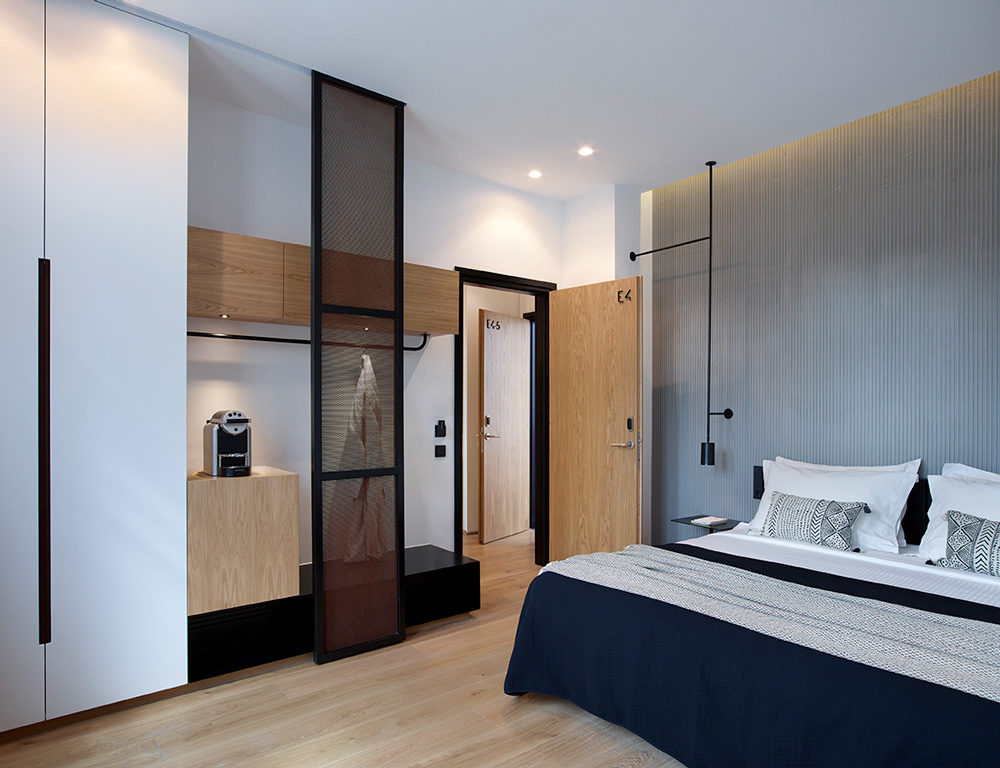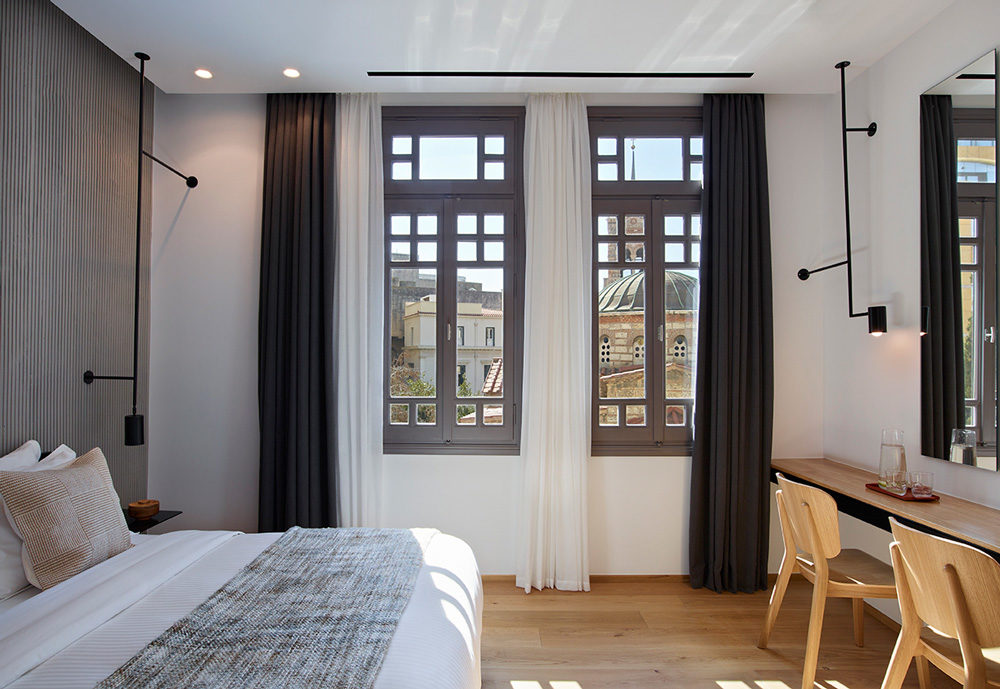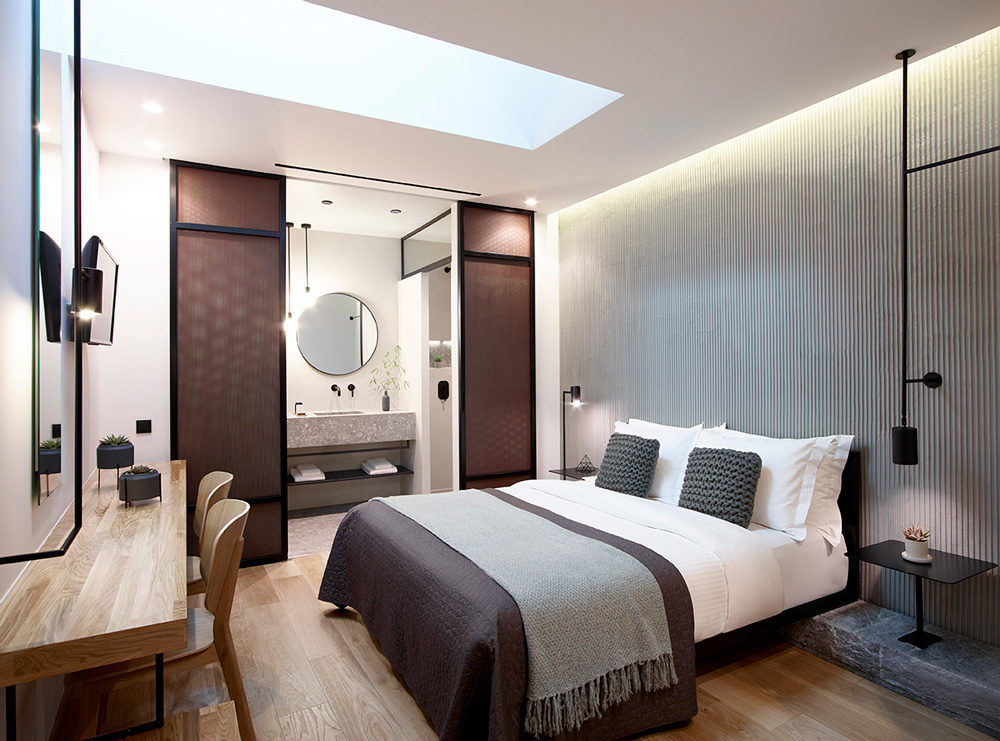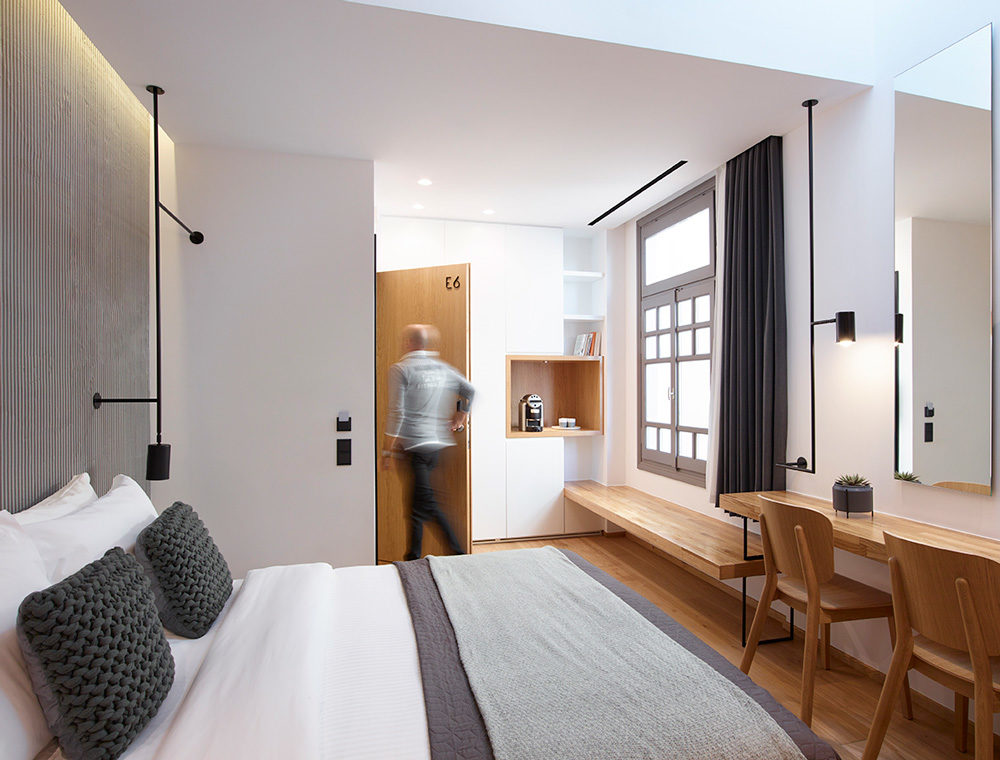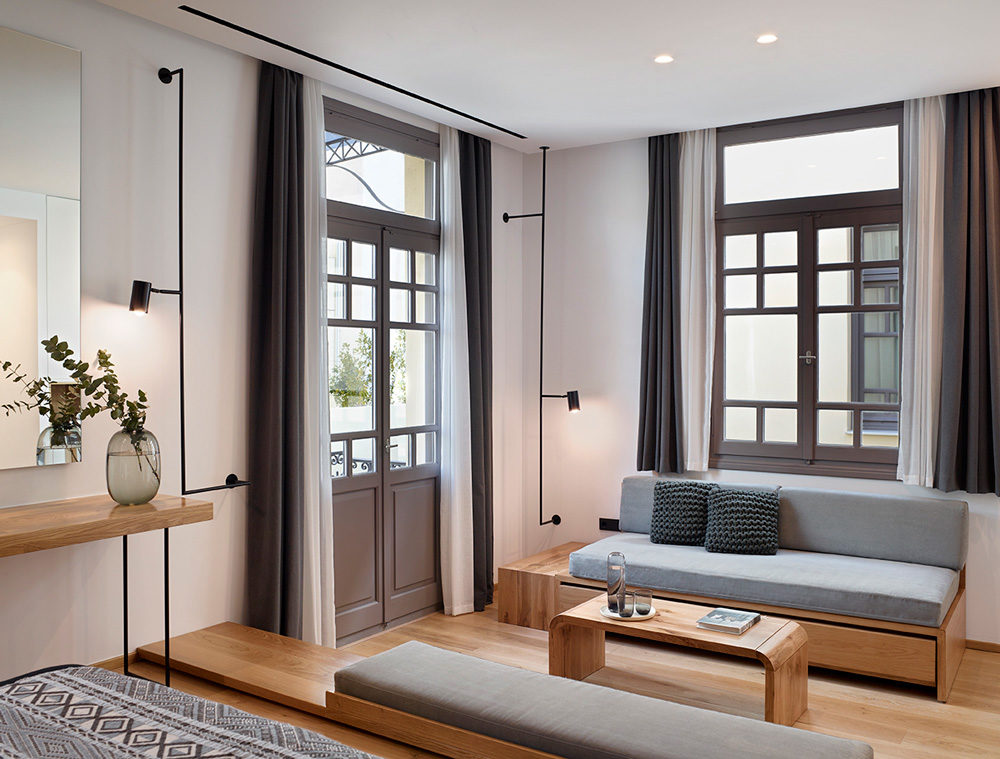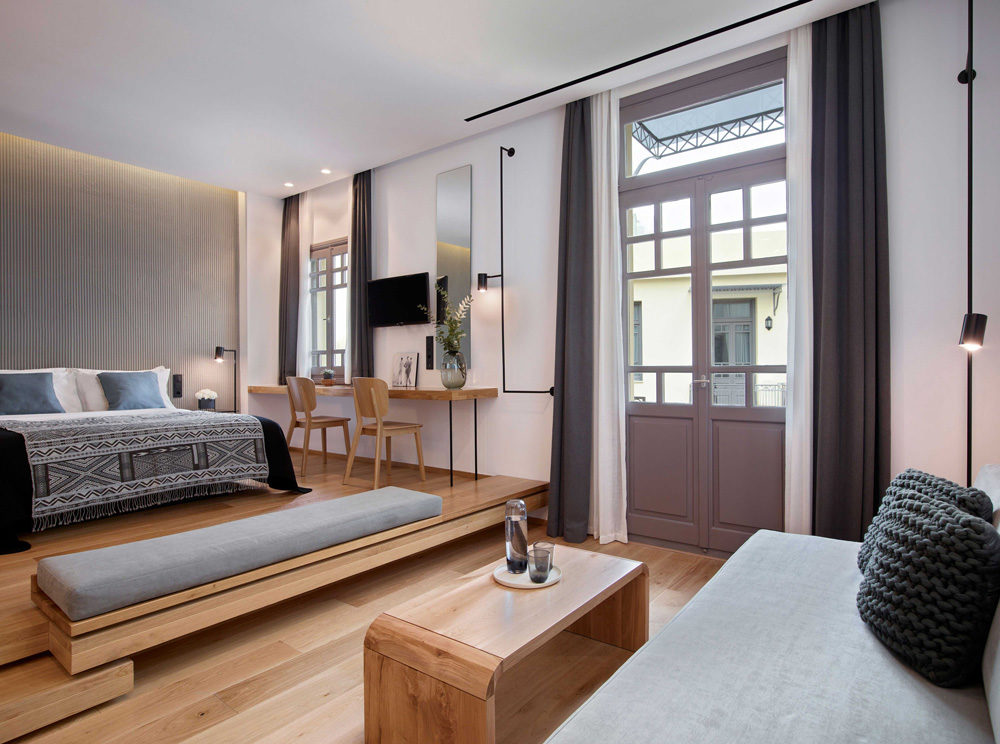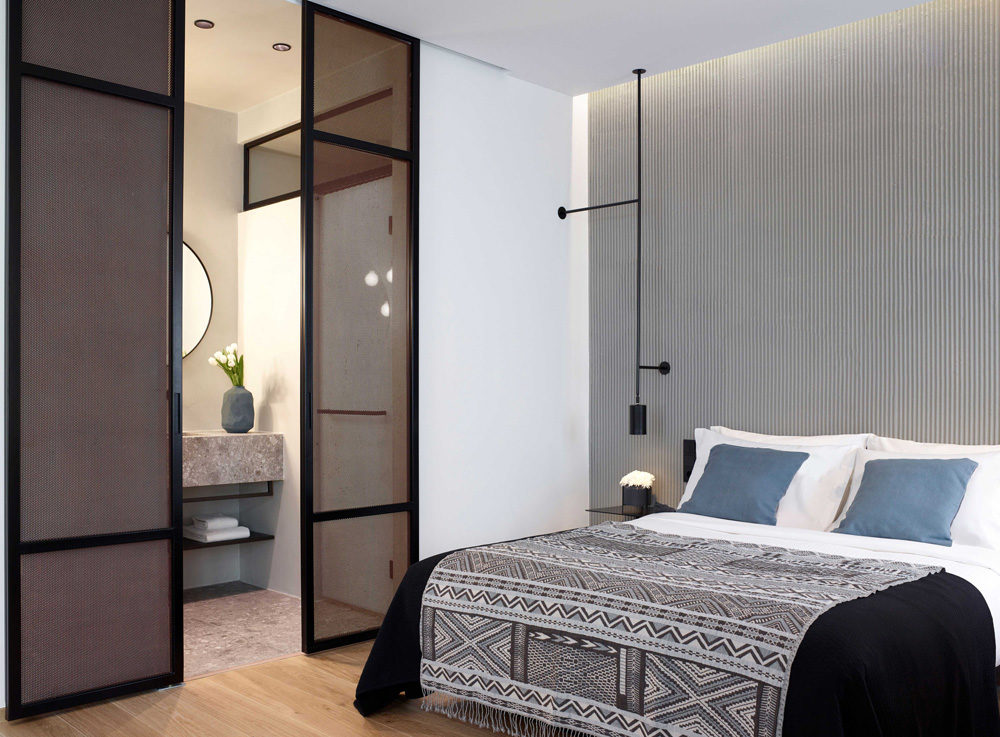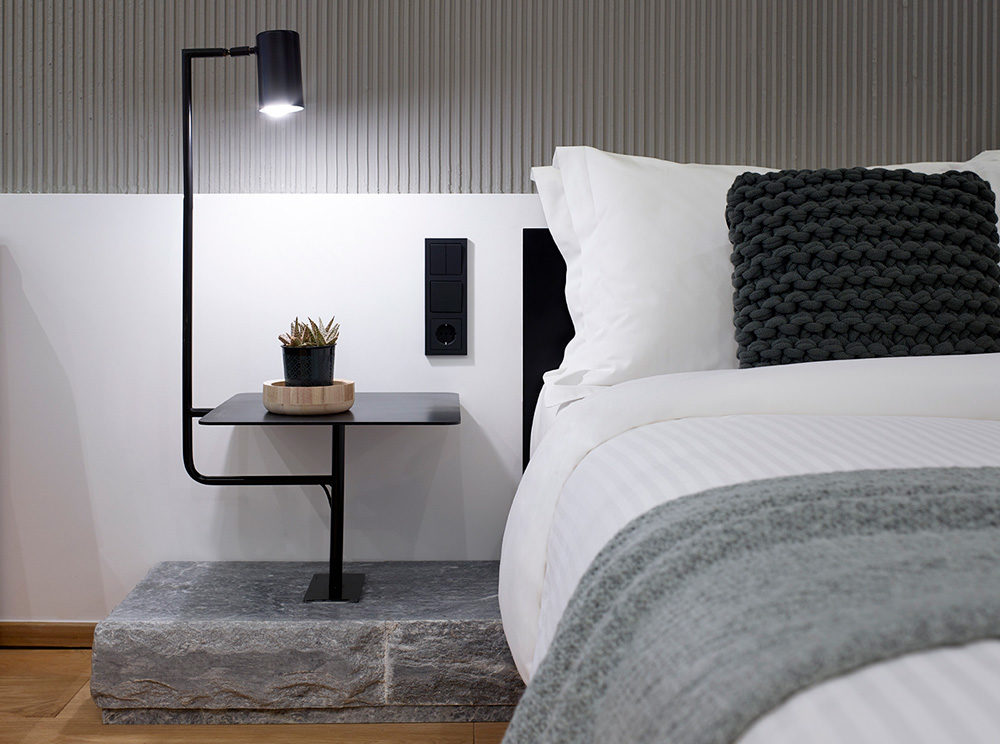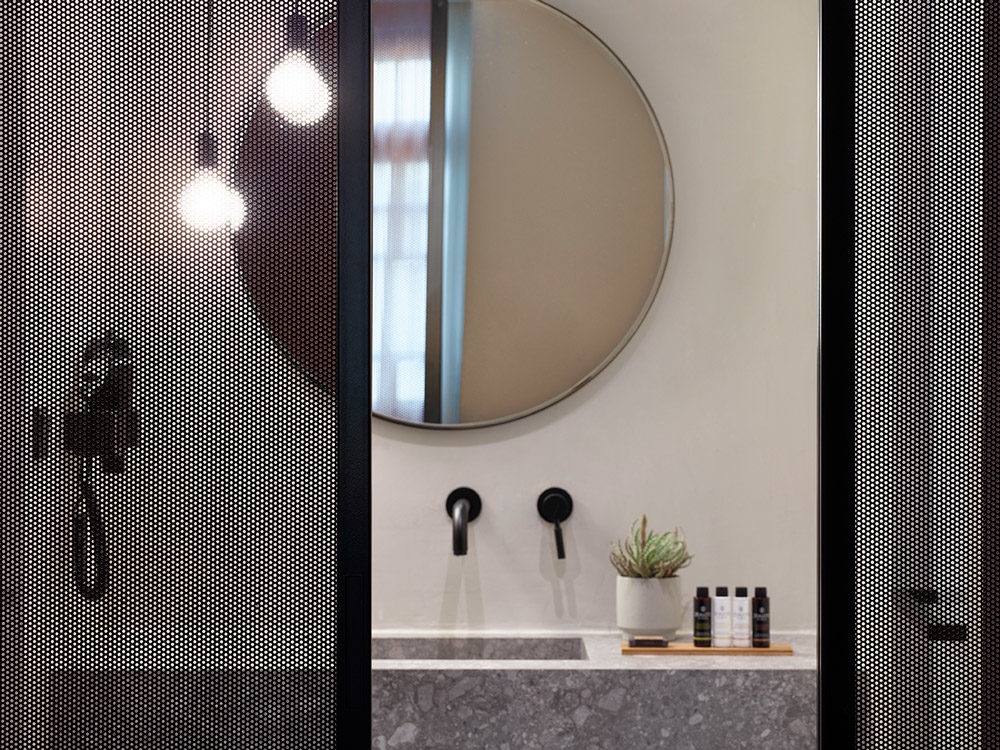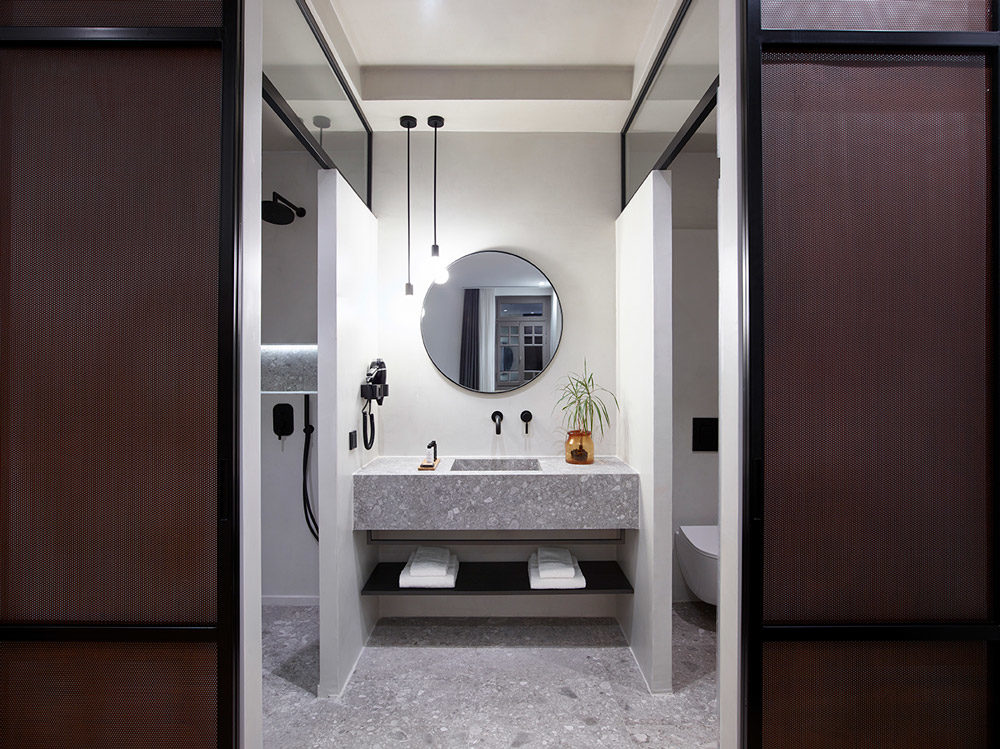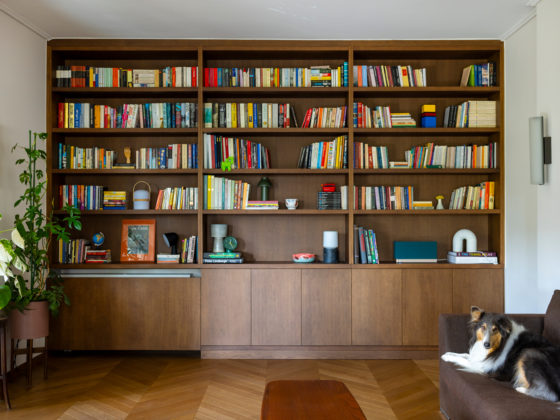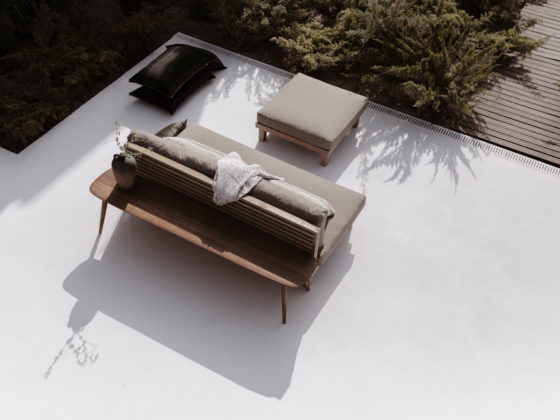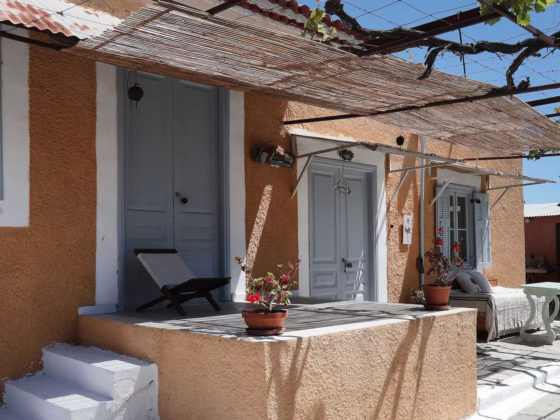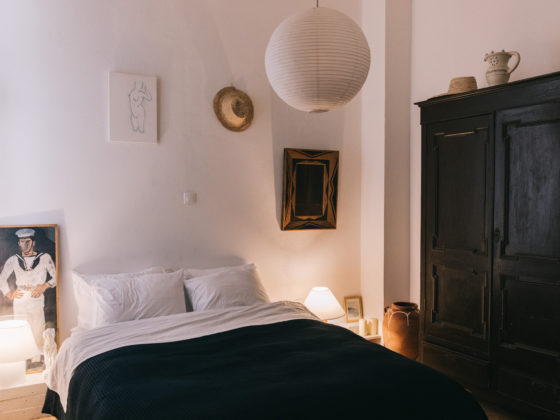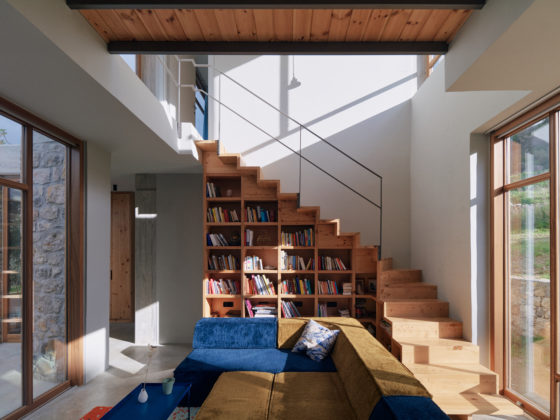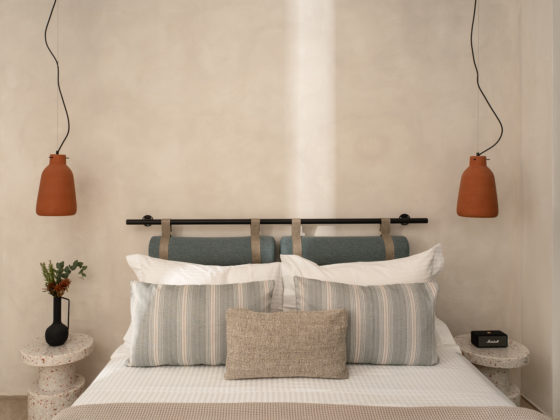The study of STOA Studio Of Architecture concerned the restoration of the building located at 3 Souri Str. and its conversion to the new wing of in[n]Athens Hotel.
The building, which has been listed as modern monument, is part of a building complex that was built in 1922 by the Rallis family in order to host wealthy refugees from Anatolia. It includes two buildings that are inter-connected through a central atrium that is accessible through Stoa Ralli.
In[n]Athens Hotel first opened in 2015 at the inner building of the complex, following the study of the architect Dionisis Sotovikis. The hotel was extended to the building facing Souri Str. in 2019, following the architectural study by STOA Studio Of Architecture.
The expansion of the hotel provides 16 rooms, foyer and a new reception area. The architects aimed to assign an authentic and distinct aesthetic identity to the new wing that would highlight the particular morphological elements of the historical building, but also relate to the simple and ‘raw’ aesthetics of the initial wing of the hotel.
The 16 new rooms are characterized by a common aesthetic approach but differ in size and functional organization – serving the functional requirement for the existence of rooms with different capacities and adapting the irregular shape of the plan of the historic building that does not allow repeatability.
STOA Studio of Architecture has designed the interior so as not to alter the character of the historic building, which retains its exterior glamor. Elements such as the gypsum decoration of the ceilings, the staircases and the tall wooden doors of the interior patio were preserved and highlighted.
The simple and rough aesthetic approach of interiors is characterized by strict geometries and the use of natural materials. Raw marble and black iron elements are projected on the white background of the walls.
At the same time, the space feels warm with the use of wood and perforated oxidized iron sheets. The folds of the eclecticism facade of the building are turned into combed face concrete in the bedrooms, while the luminaires and the bedside tables made of black iron tubes are a modern reference to the Art Deco elements of the building.
The interior patio of the building pre-existed but was redesigned in order to host a small indoor garden. The height of the patio was highlighted by the design of a double-height metal construction for climbing plants.
The preserved staircase remained untouched and was highlighted only by the use of linear perimetrical lighting. At the ground floor entrance of the staircase, a lighting structure made of oxidized perforated iron panels was designed, achieving the use of common architectural vocabulary between the rooms and public areas of the hotel. This structure, with its simple geometries and rough texture, contrasts sharply and, thus, highlights the historic staircase. At the same time, it frames the entrance when the visitor enters the building.
STOA Studio Of Architecture also designed all of the hotel’s custom-made fixed and mobile equipment, often implementing inventive solutions that achieve multifunctionality and save space in the rooms.
![in[n]Athens Hotel](https://www.thegreekfoundation.com/wp-content/uploads/2019/06/08178acdaf59fb8ef375c94d8977cc93-1160x858.jpg)
